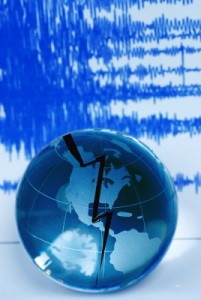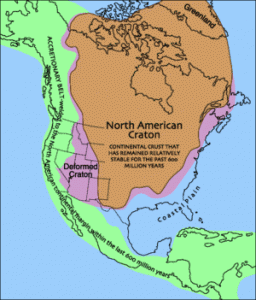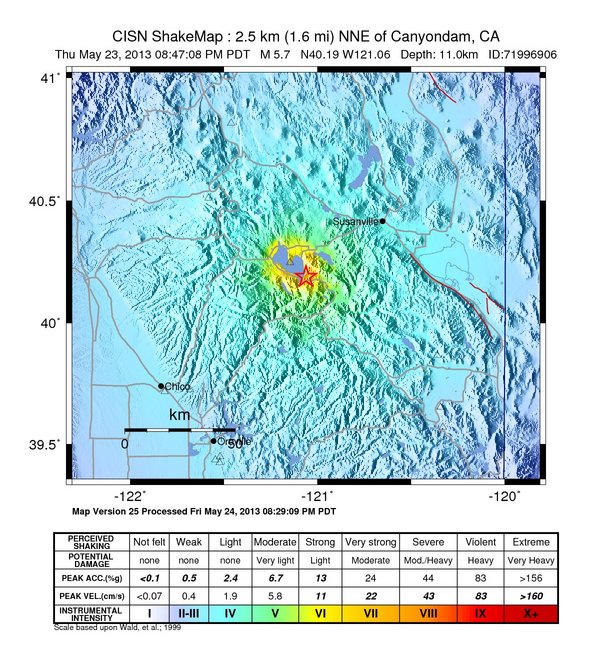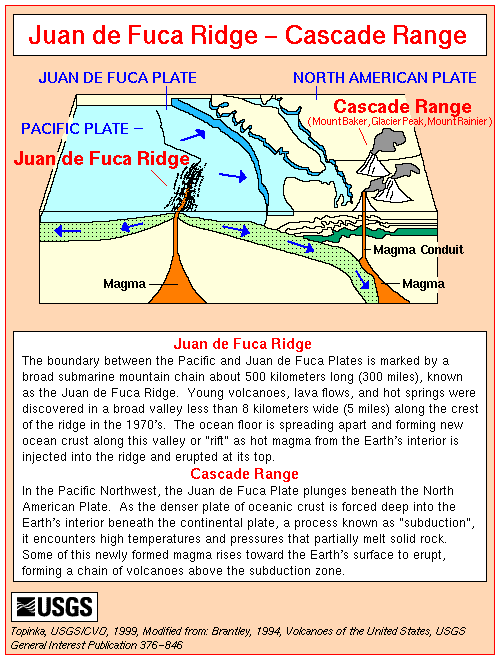
There is an increase in earthquakes worldwide today.
It’s human nature to worry about the large earthquakes happening around the world today, but some of the smaller quakes can be just as intriguing – especially when they occur in odd places.
The Craton
There is an ancient geologic plate boundary that was once the southern seashore in the USA called the Craton boundary.
Craton boundaries are found all over the Earth, and these are the ancient continental boundaries that we can “no longer see.” Rest assured that they are still there, and they are becoming more active as the Earth’s poles shift and reposition the planet’s crust.
The North American Craton runs alongside/parallel to the Appalachian Mountains and turns west in Northern Georgia. It goes through Northern Alabama, Mississippi, Southern Arkansas, Oklahoma, and Northern Texas. At the foothills of the Rockies in Northeastern New Mexico, the Craton boundary shoots north and parallel to the Rocky Mountains through Canada.

The North American Craton boundary – Wilipedia
The Craton boundary is the location of the North American continental shoreline over 65 million years old, and earthquakes along this ancient southern plate boundary are increasing in Oklahoma, Texas, Arkansas, and along the Gulf of Mexico and Mississippi River Valley.
This is something that we need to pay attention to.
US Craton Quakes Within the Past 5 Days
- Trinidad, Colorado – 2.9 and 2.6
- Ridgeville, South Carolina – 2.5
- Whitehall, Montana – 2.6
- Alamo, Nevada 2.6
- Old Faithful Geyser, Wyoming – 3.4, 3.2, 2.7, 2.7, 2.5, 3.6, 2.6 (all on 9/15/13)
- Boley, Oklahoma – 3.1
- Greenbrier, Arkansas – 2.5
- Anthony, Kansas – 2.9
The magnitude doesn’t matter in this case – it’s the LOCATION that matters, and the locations are most intriquing, wouldn’t you say?
We Saw It Coming
On September 14, 2013, the day before the US Craton began to move, their was a major earthquake swarm in the British Virgin Islands and Puerto Rico, Virgin Islands in the Caribbean Sea south of the Craton boundary.
This Virgin Island transform fault zone experienced over 35 earthquakes in less than 12 hours. The quakes stopped once the swarm began at Old Faithful Geyser, Wyoming.
The North American Plate is moving, no doubt.
Heads up, all you States along the Craton. You might want to take your great-grandmother’s antique China bowl down from the top-shelf.


